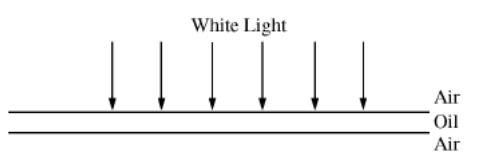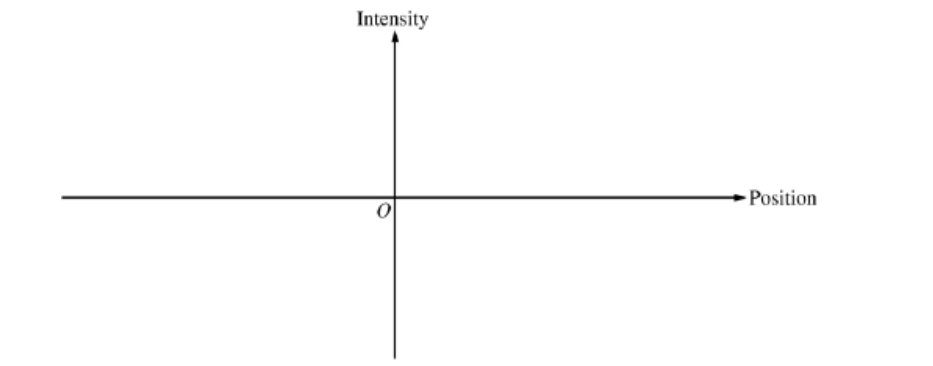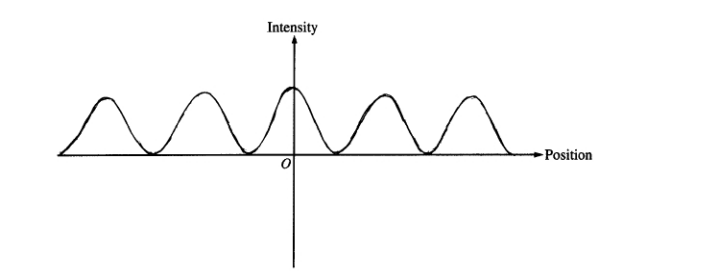Question

A wide beam of white light is incident normal to the surface of a uniform oil film. An observer looking down at the film sees green light that has maximum intensity at a wavelength of 5.2 x 10–7 m. The index of refraction of the oil is 1.7.
(a) Calculate the speed at which the light travels within the film.
(b) Calculate the wavelength of the green light within the film.
(c) Calculate the minimum possible thickness of the film.
(d) The oil film now rests on a thick slab of glass with index of refraction 1.4, as shown in the figure below. A light ray is incident on the film at the angle shown. On the figure, sketch the path of the refracted light ray that passes through the film and the glass slab and exits into the air. Clearly show any bending of the ray at each interface. You are NOT expected to calculate the sizes of any angles.

▶️Answer/Explanation
Ans:
a) n = c / v … 1.7 = 3×108/ v … v = 1.76×108 m/s
b) n1 λ1 = n2 λ2 … nair λair = noil λoil … (1)(520 nm) = (1.7) λoil … λoil = 306 nm
c) To see the green light max intensity, we need constructive interference in the film for that green light wavelength. As the light travels from air–oil, it undergoes a ½ λ phase shift, but there is no phase shift at the second boundary. In order to produce constructive interference, we need to produce a total extra ½ λ phase shift from traveling in the film thickness. This requires the film thickness be ¼ λoil = ¼ (306) = 76.5 nm
d) Only the refracted ray is shown. We assume total internal reflection does not occur based on problem statements.

Question
Your teacher gives you a slide with two closely spaced slits on it. She also gives you a laser with a wavelength λ = 632 nm. The laboratory task that you are assigned asks you to determine the spacing between the slits. These slits are so close together that you cannot measure their spacing with a typical measuring device.
(a) From the list below, select the additional equipment you will need to do your experiment by checking the line next to each item.
___ Meterstick ___ Ruler ___ Tape measure ___ Light-intensity meter
___ Large screen ___ Paper ___ Slide holder ___ Stopwatch
(b) Draw a labeled diagram of the experimental setup that you would use. On the diagram, use symbols to identify carefully what measurements you will need to make.
(c) On the axes below, sketch a graph of intensity versus position that would be produced by your setup, assuming that the slits are very narrow compared to their separation.

(d) Outline the procedure that you would use to make the needed measurements, including how you would use each piece of the additional equipment you checked in (a).
(e) Using equations, show explicitly how you would use your measurements to calculate the slit spacing.
▶️Answer/Explanation
Ans:
a) Meterstick, Tape measure, Large Screen
b) 
c) 
d) Set up the laser to shine on the slide, and set the screen far away on the other side of the slide. Measure the distance L from the slide to the screen with the tape measure. Use the ruler to measure the distance x between adjacent maxima.
e) With the values obtained above, plug into m λ = d x / L, with m = 1 for the first spot and other variables as defined above and the known λ of the laser used, solve for d. Assuming angle θ is small. It not, determine theta and use m λ = d sin θ
